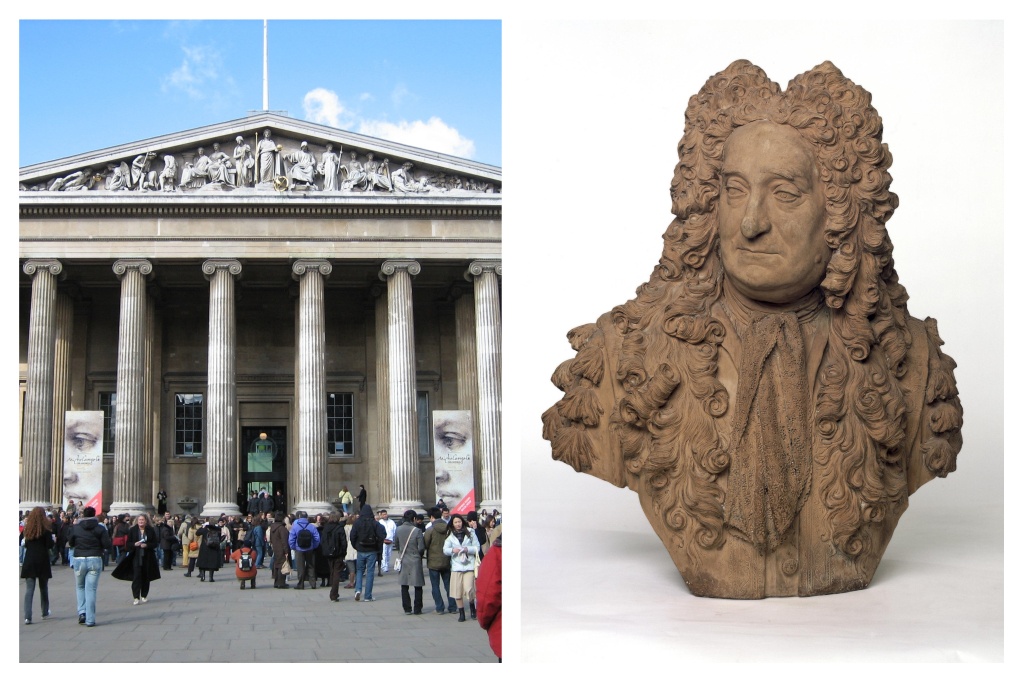British Museum removes slave-owning founder’s statue

The British Museum has removed a bust of its founder, Sir Hans Sloane, from its pedestal acknowledging his relationship to slavery and the slave trade, to confront its links to colonialism. The bust of Sir Hans Sloane has been re-displayed in the Enlightenment Gallery juxtaposed with objects that reflect that Sloane's collection was created in the context of the British Empire and the slave economy. The display acknowledges that Sloane's travels and collecting in colonial Jamaica used enslaved Africans and explores the fact that his collecting was partly financed from the labour of enslaved Africans on his wife's sugar plantations.
Hartwig Fischer, Director of the British Museum said:
"Dedication to truthfulness is crucial, when we face our own history. We have taken the bust of Hans Sloane from its pedestal and placed him in the limelight in a case in the centre of the Enlightenment Gallery, acknowledging his relationship to slavery and the slave trade. Sloane allows us to highlight the complexity and ambiguity of this period, he was a physician, collector, scholar, benefactor and slave owner. We will continue to explore our history and we will do this in collaboration with people from across the globe to rewrite our shared, complicated and, at times, very painful history as equals. We continue to acknowledge Sloane's radical vision of universal free public access to a national museum collection and the public benefit that is generated through the British Museum."
About Sir Hans Sloane
Sir Hans Sloane (1660–1753) was born in Killyleagh, Ulster, in the North of Ireland, in relatively modest circumstances as the third son of migrants from Ayrshire in Scotland. Inspired by a childhood interest in natural history, he studied medicine and botany in London, Paris and Montpellier, taking his MD from Orange. In 1689, Sloane set up a successful medical practice at his home in No. 3 Bloomsbury Place, London.
Sloane the collector
Sloane's career as a collector really began in 1687 when he sailed for Jamaica, then an English colony, as physician to the colony's new Governor, the Duke of Albemarle. Sloane worked as a doctor on slave plantations and, with assistance from both English planters and enslaved West Africans – Akan men and women mainly from present-day Ghana and Cote d'Ivoire – assembled a collection of 800 plant specimens, as well as animals and curiosities.
On returning from the Caribbean, Sloane married Elizabeth Langley Rose, heiress to sugar plantations in Jamaica worked by enslaved people, profits from which contributed substantially to his ability to collect in the ensuing years, in addition to his medical income. Sloane bought numerous natural and artificial curiosities from travellers and colonial settlers around the expanding British Empire, ranging from North America and the West Indies to South and East Asia.
By his death in 1753 he had collected more than 71,000 items. Sloane bequeathed his collection to the nation in his will and it became the founding collection of the British Museum.
* Excerpt from the British Museum’s description of Sir Hans Sloane.
About the British Museum
The British Museum is a public institution dedicated to human history, art and culture, and it was the first public national museum in the world. The British Museum was established in 1753, largely based on the collections of the Irish physician and scientist Sir Hans Sloane. Its permanent collection of some eight million works is among the largest and most comprehensive in existence, having been widely sourced during the era of the British Empire.
The museum is a non-departmental public body sponsored by the Department for Digital, Culture, Media and Sport, and as with all national museums in the UK it charges no admission fee, except for loan exhibitions.
For further information visit https://www.britishmuseum.org/




